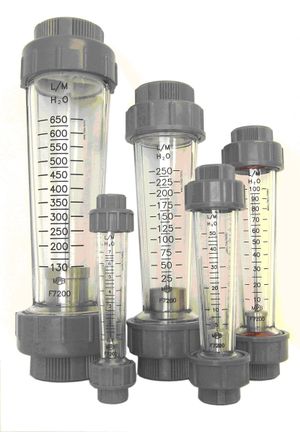VA Flow Meters
Variable Area Flow Meters are a type of differential pressure Flow Meters. These are simple and versatile devices which are used to measure the flow of liquids, gases, and steam. They work at a fairly constant pressure drop. In these types of flow meters, a direct visual indication of flow rate is given by the position of the float, piston or vane. The position of their float, piston or vane gets changed as the rising flow rate opens a larger flow area to pass the flowing fluid. When the flow decreases, either the force of gravity or a spring is employed to return the flow element to its quiescent position. Gravity-operated meters also Rotameters must be installed in a vertical position, whereas spring operated Meters can be mounted in any position. Each and every variable area flow meter is available with local indicators. Moreover, they can also be provided with position sensors and transmitters i.e. Pneumatic, electronic, digital, or fiberoptic types for linking to remote displays or controls.
Variable area flow meters provide a cost effective solution for measuring moderate to very low flow rates in a wide variety of liquids and gases.
Types of variable area flow meters
Variable area flow meters are available in following variety of designs
- Rotameter
- Bypass rotameter
- Open-channel variable gate
- Tapered plug
- Vane or piston designs
Principle of Operation
The position of the float in its tapered flow tube is directly related to the annulus area around the ball float at which the upward flow force and gravity are at equilibrium, i.e. as the flow increases the float rises, and decreases the float falls, hence the flow rate can be read directly from the calibrated tube. The tube and float assembly is designed so that vertical float movement is unrestricted.
